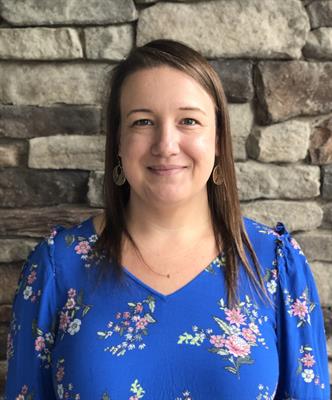October 16, 2020 -- Developing well-characterized adeno-associated viral vectors (AAVs) is a significant obstacle for the biomanufacturing industry. A group of analytical researchers is trying to overcome this challenge by developing novel analytical methodology specifically designed for AAVs.
Recombinant AAVs are commonly used as viral vectors in gene therapies to deliver genetic materials into target cells. The manufacturing of these vectors requires extensive knowledge of methods to generate and purify AAVs.

Several attributes are known to be of importance for AAV product quality, including the ratio of viral capsid proteins, the sequence of the gene to be delivered, and the ratio of full to empty capsids, according to Caroline Smith-Moore, PhD, assistant director, Analytical at North Carolina State University's Biomanufacturing Training and Education Center (BTEC). Smith-Moore recently spoke with ScienceBoard.net about the center's work.
The characterization of quality attributes and criticality of these attributes remains ambiguous in many AAVs, as compared to monoclonal antibodies which are well characterized and have established analytical toolkits to thoroughly interrogate materials during biopharmaceutical production.
One of the unknowns when it comes to AAVs is the impact of post-translational modifications on the capsid surface, explains Smith-Moore. Changes from post-translational modifications can occur at any number of steps during production, from biogenesis of the virus to various manufacturing unit operations. The criticality of these molecular modifications remains to be determined in many cases.
Collaboration to characterize AAVs
As principal investigator of the National Institute for Innovation in Manufacturing Biopharmaceuticals (NIIMBL) project, Smith-Moore is leading the efforts to develop analytical methods to characterize AAVs and define the criticality of quality attributes, so that analytical tools can be applied to manufacturing for the production of high-quality, desirable viral vectors.
As part of the project, researchers are pioneering multiattribute method (MAM) mass spectrometry (MS) and ion mobility spectrometry (IMS) methodology into the gene therapy space. With these methods, they hope to gain site-specific peptide maps of the capsid surface based on separation by mass-to-charge ratio for MAM and increased resolution of capsid viral proteins for IMS.
The MAM work is being spearheaded by John Schiel, PhD, from the U.S. National Institute of Standards and Technology (NIST); Schiel pioneered a similar analytical toolkit for monoclonal antibodies in 2018. The IMS work is being conducted by Erin Baker, PhD, in the department of chemistry at NC State. The research is still in the early stages, as scientists work to optimize sample preparation protocols.
The last phase of the NIIMBL project is the development of a transduction assay (to determine how well genetic material is transferred in cell culture) that will allow for the association of post-translational modifications on AAVs to actual transduction data to inform manufacturers about the impacts on final product. This work is being done in parallel to the development of the other analytical methodologies.
Beyond the NIIMBL project, Smith-Moore is leading efforts to develop additional analytical methods to fully characterize AAVs. This includes developing high-performance liquid chromatography (HPLC) methods to efficiently separate empty and full capsids.
BTEC researchers are also working on several other gene therapy-related projects. The team is developing downstream purification processes to separate empty and full capsids via ion exchange chromatography. They are also working on methods to increase AAV titers, which has historically been a challenge for the industry. The BTEC team also works with internal and external collaborators to evaluate new tools and methods or analyze samples through BTEC's analytical services.
Short courses in gene therapy
Among the many services that BTEC offers are industry short courses. These courses provide hands-on guidance and training in various aspects of biomanufacturing. Smith-Moore helps instruct the current good manufacturing practices (cGMP) Biomanufacturing of Vectors for Gene Therapy short course. She is also working on developing a brand-new course on analytical technologies in gene therapies.
"The hands-on portion of these courses is so important," said Smith-Moore.
These courses incorporate molecular biology and gene therapy concepts that many participants have never encountered before to give real-life experience with the fundamental concepts of biotechnologies needed to create innovative gene therapy products.
Copyright © 2020 scienceboard.net


